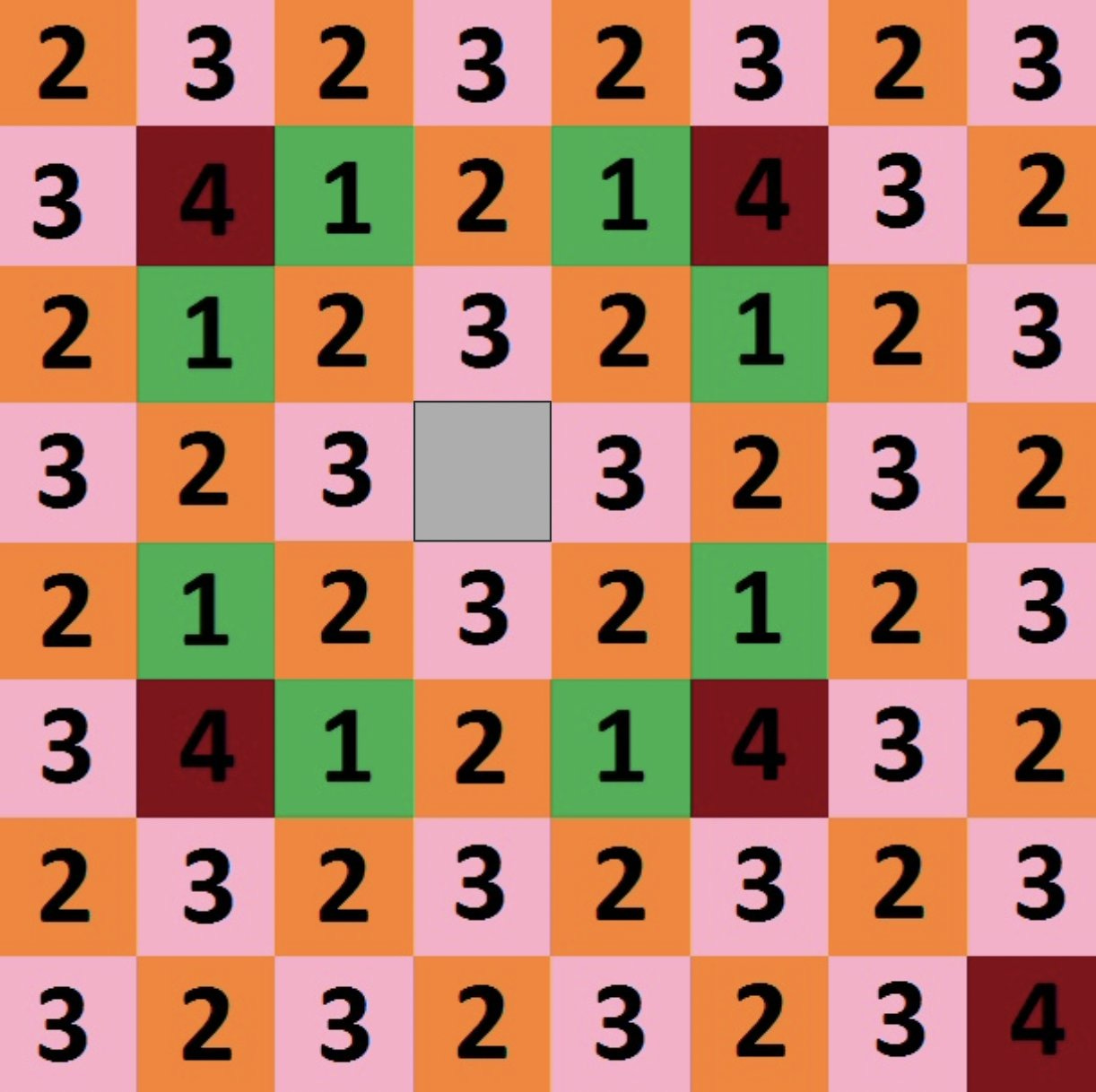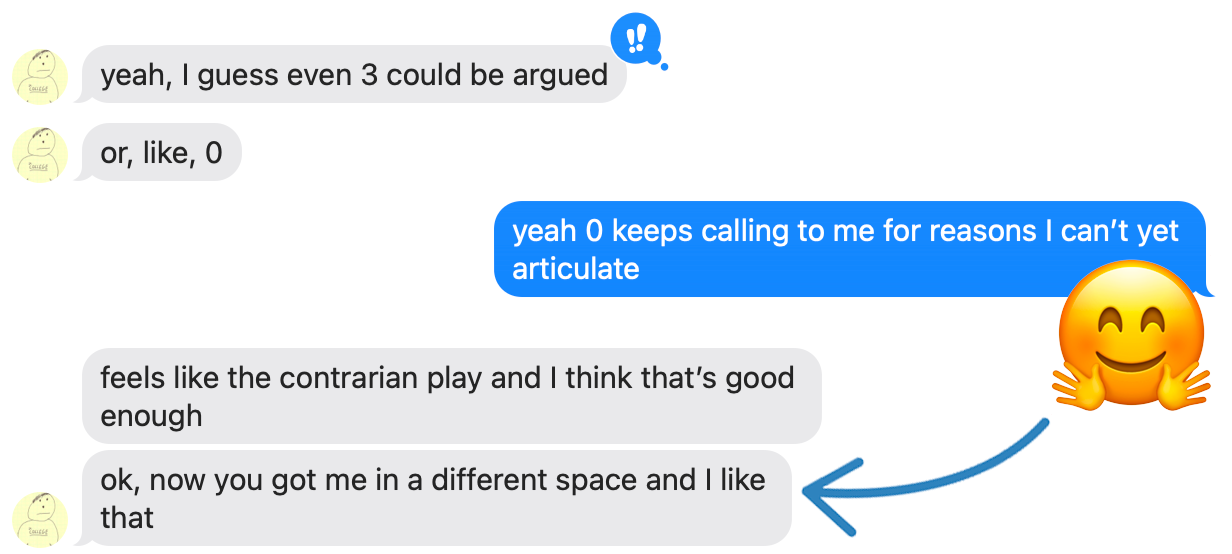What IS The Answer? v What COULD BE The Answer?
The difference a couple of words made with a math problem.
This is a brief post, first, to recommend this brainworm from Sunil Singh.
And, second, to share with you a formative experience I had posing it to my students, which is how I frequently refer to my friends in our group chat. I first posed it as I had found it, asking “What is behind the grey square?”
Rough, right?
This is just to note that when we use “what is the rule?” inductive-style reasoning questions, some students like my friend here feel their thinking hemmed in by invisible expectation.
What I then shared with him was that “I saw that image on Twitter and thought like, ‘Come on, you people think there’s only one answer? There could be a bunch of answers!’”
And the conversation changed.
The fun and scary thing about curriculum design is how two words—like changing is to could be—can change a kid’s whole morning. Small changes to our invitations into Mathworld can transform it from a land full of invisible dangers into terrain where every step, whether it leads exactly where you hoped or not, leads you somewhere more interesting.
2022 Sep 15. Heather Johnson wrote along similar lines re “what is” and “what if”.
What Else

Check out a couple of very nice suggestions along these lines from Connor Wagner and Bryan Meyer.
I’m generally ashamed of any piece of my writing—the prose or ideas or both—that’s older than five years. “Math: The Angry, Injured Wolverine” relates to the ideas of this post. It’s almost old enough to drive and I’m still pretty proud of it.
In the most recent episode of Math Teacher Lounge, Bethany Lockhart Johnson and I shared our math biographies—the early interactions with math that shaped our careers and lives. Really fantastic conversation IMO, especially Bethany’s side.
Liam Kofi Bright is a British philosopher with an interesting new paper (here’s a preprint) that offers a very helpful way to understand our frequent social convulsions and find a way out of what feels like perpetual gridlock and stalemate. Find me at NCTM and let’s chat about where teachers fit into this.
Amanda Jansen asked a question that got the people going: “How would you respond to a colleague who wonders whether students in mathematics class would get confused if they see multiple solution strategies for the same problem?”



